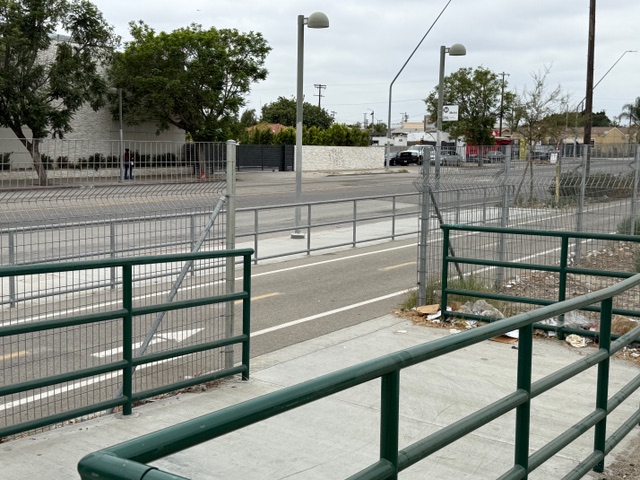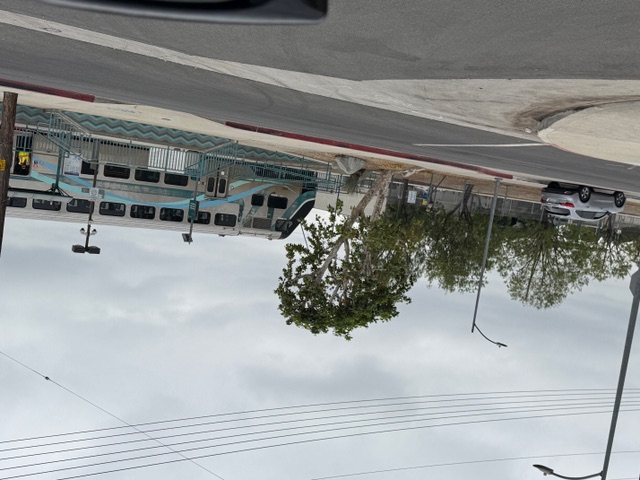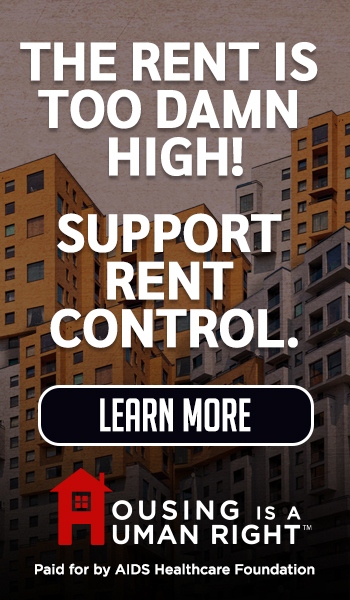Comments
SUN VALLEY - Community Leaders Question Placement of Interim Housing Project Behind Business District and Dangerously Close to Sun Valley Metrolink Train Station, Nearby Business and Residential Communities
A controversial temporary housing initiative involving tiny homes is set to be constructed in the Sun Valley Metrolink station parking lot, provoking strong resistance from local business proprietors, commuters, and nearby families who argue that the facility presents considerable safety hazards to workers, public transit riders, park patrons, and local residents.
Crime Statistics Paint an Alarming Picture
Data from similar tiny home initiatives across the state highlights concerning trends that support community fears. The Branford Village tiny home location, which began operations in February 2023, accommodates individuals facing homelessness near a busy transit corridor and surrounding businesses. It expanded to the nearby communities outside of tiny homes and it is about 2-3 miles from the current tiny home project. The questionable strategic positioning of such facilities next to public transportation hubs creates significant security risks that jeopardize the wider community. Residents living closest to the tiny homes report frequently calling the police about open drug use, theft, vandalism, and property crimes.
Vulnerable Population, Public Safety Crisis
The Sun Valley interim housing will house individuals struggling with severe addiction, mental health crisis, and criminal histories. These are populations that require intensive therapeutic intervention, not just temporary shelter. Internal reports from Los Angeles tiny home villages documented 33 deaths in just 13 months, with numerous overdoses, weapons violations, and violent incidents. One village alone reported six to eight fentanyl overdoses during a resident’s three-year stay. This ‘low threshold’ facility houses people with criminal records, people with high acuity mental illness (of danger to themselves or others) and actively drug addicted people. Safety worries are not confined to Sun Valley alone. A Pepperdine review of LAHSA records found 170 police, fire and medical calls at Alexandria Park village in North Hollywood between January and August 2023 alone, covering assaults, weapons, suicides and overdoses. City correspondence logged by the clerk’s office describes adjacent encampments, drug dealing and fires spilling into surrounding neighborhoods despite initial promises that the tiny-home fence would end street disorder.
The Sun Valley interim housing will house individuals struggling with severe addiction, mental health crisis, and criminal histories. These are populations that require intensive therapeutic intervention, not just temporary shelter. Internal reports from Los Angeles tiny home villages documented 33 deaths in just 13 months, with numerous overdoses, weapons violations, and violent incidents. One village alone reported six to eight fentanyl overdoses during a resident’s three-year stay. This low threshold facility houses people with criminal records who are of danger to themselves and the society and actively drug addicted people. Safety worries are not confined to Sun Valley alone. A Pepperdine review of LAHSA records found 170 police, fire and medical calls at Alexandria Park village in North Hollywood between January and August 2023 alone, covering assaults, weapons, suicides and overdoses. City correspondence logged by the clerk’s office describes adjacent encampments, drug dealing and fires spilling into surrounding neighborhoods despite initial promises that the tiny-home fence would end street disorder.
Undoubtedly, councilmember Padilla either is clueless how serious and life threatening the consequences of her unsupported decision is or simply refuses to admit it. The councilmember did not conduct thorough inquiry to determine how this devastating project impacts a community that has already been victimized and chronically plague-ridden by homelessness and RV encampments, lack of resources and green space, failing infrastructure, environmental pollution, illegal dumping, concentration of toxic facilities, dumpsters, and underfunding. She failed to answer to the fact that the population that will be housed in these tiny homes will quickly intrude and penetrate the residential communities nearby by utilizing the only liquor store, and 7 Eleven within a walking distance, the gas station at the corner of Sunland and San Fernando, they will quickly insert themselves into the Sun Valley Park and Recreation Center, the list of terrifying consequences goes on and on. It is hard to square with the fact that the councilmember, so eager to aggressively display her power and authority as such, makes decisions that clearly do not line up with her campaign promises to improve the life in her home town and do something to uplift a marginalized low-income community of color.
Transit Safety Under Siege
The proximity to Sun Valley Metrolink station creates yet additional vulnerabilities as public transportation systems throughout California struggle with homeless-related safety issues. Sun Valley Metrolink train tracks are already heavily trashed and vandalized by growing number of encampments.
Approving this project in a community where councilmember Padilla so proudly featured about in her campaign, had her own lived experiences of gang activities, chronic homelessness, vandalism and graffiti tearing the community apart, raises serious concerns about her ability to be a sound leader her district so desperately hopes for, make sound judgements and decisions having real people in mind, not profits and favors, to keep community and workers safe. Transit riders have raised safety concerns by providing community impact statements, but that did not stop Padilla and Mayor Bass from moving forward with this project with gross disregard of the community feedback and concerns, staying truthful to the Los Angeles city hall slogan “Profit and favors before people”.

Business Community Impact
Local businesses also bear the brunt of these disruptive placement decisions, with employers struggling to ensure employee safety while maintaining operations. In Sun Valley’s industrial corridor, business owners have resorted to blocking sidewalks with concrete barriers and dumpsters to prevent encampment formation after repeated city cleanups failed.
“The businesses on Randall Street have been infested by mobile homes, tents, drugs, addicts, prostitution, and mentally ill people,” said one Sun Valley business owner, highlighting the ongoing challenges that interim housing projects can exacerbate rather than solve. The same holds true for nearly all business corridors in Sun Valley. And now the same issue becomes a threat to a long-time local business, which will share its facility with tiny homes thanks to a flawed decision made by council district six leader.
It may come as a shock to some to learn that the city (Padilla) received a very generous cash offer to purchase or lease the land from a long-standing and respected local business owner who supported and made donations to every charity in the area for over two decades and provided jobs to the community (police, fire departments, schools). The offer provided great benefits to the community - expansion, hiring more locals, more and increased property tax, beautiful and state of the art building. Nonetheless, councilmember Padilla flatly and rudely rejected the offer and made a point of telling the business owner “not to even think of discussing it further”. What can be more illogical? Is this a display of influence or demonstration of control? In fact, it is more abuse of power to intimidate business owners and keep the district six tradition of violating low-income communities of color in environmental justice areas.

Policy Questions Remain
While Mayor Bass promotes forcing greater public transit usage, the simultaneous placement of high-risk interim housing inside or near transportation hubs creates a contradiction that endangers the very residents the city seeks to encourage onto public transportation.
The combination of vulnerable populations requiring intensive services, inadequate security staffing, and proximity to families and children raises fundamental questions about site selection criteria and public safety priorities. Interim housing should be located in industrial areas away from schools, childcare facilities, public parks, residences, and major transit corridors - not integrated into the heart of family neighborhoods and business districts where the risks to public safety far outweigh the intended benefits.
(Mariam Moore is the CEO of The Climate Corps Initiative (TCCI), the first environmental non-profit organization dedicated to advocate for environmental justice in Sun Valley and adjacent areas. She is also a resident of Sun Valley, community and public health advocate, and an environmental activist. She is a volunteer at CPAB and a public servant.)
(Mihran Kalaydjian has over twenty years of public affairs, government relations, legislative affairs, public policy, community relations and strategic communications experience. He is a leading member of the community and a devoted civic engagement activist for education spearheading numerous academic initiatives in local political forums.Mihran is also the President of Industrial Intermediates & Infrastructure of TCCI).






